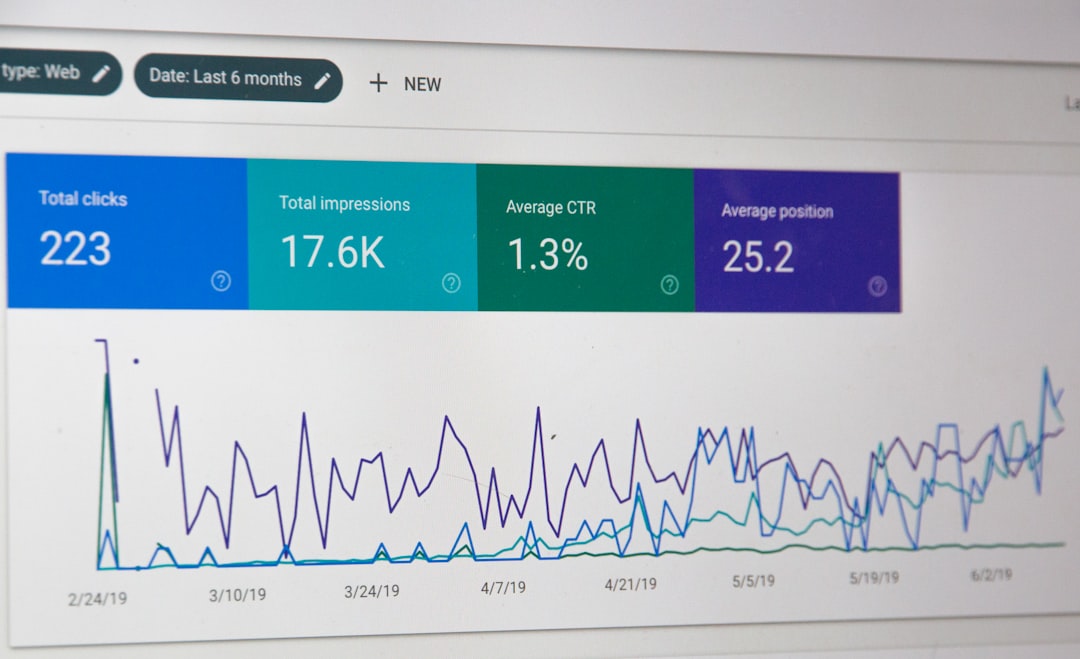Microdata is a form of structured data that allows webmasters to provide additional context to search engines about the content on their websites. By embedding microdata within the HTML of a webpage, site owners can help search engines better understand the information presented, which can lead to enhanced visibility in search results. This structured data is often used to create rich snippets, which are visually appealing search results that can include images, ratings, and other relevant information.
The use of microdata can significantly improve click-through rates, as users are more likely to engage with results that provide more context. The relationship between microdata and SEO is increasingly important in the digital landscape. Search engines like Google utilize microdata to enhance their understanding of web content, which can influence how pages are ranked.
By implementing microdata correctly, websites can improve their chances of appearing in featured snippets, knowledge panels, and other rich results that dominate search engine results pages (SERPs). This not only increases visibility but also establishes credibility and authority in a given niche. As search engines evolve, the importance of structured data continues to grow, making it essential for businesses to stay informed about best practices in microdata implementation.
Key Takeaways
- Microdata helps search engines understand the content of your website, leading to better SEO performance.
- Implementing microdata on your website involves adding specific HTML tags to your content to provide structured data.
- Choosing the right microdata types is crucial for accurately representing your content to search engines.
- Structuring your data for SEO involves organizing your microdata in a way that aligns with search engine guidelines and best practices.
- Testing and validating your microdata ensures that it is properly implemented and will be recognized by search engines.
Implementing Microdata on Your Website
To implement microdata on your website, you first need to identify the content that would benefit from structured data markup. This could include product information, reviews, events, articles, or local business details.
org vocabulary, which is widely recognized by major search engines.
The process involves embedding specific attributes within your HTML tags to define the type of content and its properties. For example, if you are marking up a product page, you would use the `itemtype` attribute to specify that the content is a product and then use `itemprop` attributes to define properties such as name, price, and availability. Here’s a simple illustration: “`html
Sample Product
$19.99 In Stock
“` This snippet provides search engines with clear information about the product being offered, enhancing the likelihood of rich snippets appearing in search results.
Choosing the Right Microdata Types

Selecting the appropriate microdata types is crucial for ensuring that your structured data accurately reflects the content on your website. Schema.org offers a comprehensive list of types and properties that can be used for various content categories. For instance, if you run a restaurant, you would want to use the `Restaurant` type along with properties like `address`, `menu`, and `aggregateRating`.
This specificity helps search engines categorize your content correctly and display it in relevant searches. Moreover, it’s essential to stay updated with the latest additions and changes to Schema.org. The vocabulary is continually evolving to accommodate new types of content and user needs.
For example, as e-commerce has grown, so too have the types related to products and reviews. By regularly reviewing your microdata types against Schema.org’s offerings, you can ensure that your website remains compliant with best practices and maximizes its potential for rich results.
Structuring Your Data for SEO
| Data Structure | Impact on SEO |
|---|---|
| Use of Schema Markup | Improves visibility in search results and enhances rich snippets |
| Clear Hierarchy and Organization | Helps search engines understand the content and its relevance |
| Optimized Meta Tags | Increases click-through rates and improves search engine rankings |
| Mobile-Friendly Design | Enhances user experience and boosts mobile search rankings |
Properly structuring your microdata is vital for both user experience and SEO performance. When structuring your data, it’s important to maintain a logical hierarchy that reflects the relationships between different pieces of information. For instance, if you are marking up an article, you might want to include properties such as `headline`, `author`, `datePublished`, and `articleBody`.
Each of these properties should be nested appropriately within the main `Article` type to create a clear structure. Additionally, using nested microdata can enhance clarity for search engines. For example, if your article includes a review section, you could nest a `Review` type within the `Article` type.
This not only provides context but also allows search engines to understand that the review is part of the article rather than a standalone entity. Here’s how this might look: “`html
Understanding Microdata
John Doe
This article discusses…
5 stars
Jane Smith
“` This structured approach not only aids search engines in parsing your content but also enhances user engagement by providing clear and organized information.
Testing and Validating Your Microdata
Once you have implemented microdata on your website, it is crucial to test and validate it to ensure that it is functioning correctly. Google provides several tools for this purpose, including the Rich Results Test and the Structured Data Testing Tool. These tools allow you to input your URL or code snippet and receive feedback on any errors or warnings related to your structured data.
When using these tools, pay close attention to any issues flagged during testing. Common problems may include missing required properties or incorrect nesting of items. Addressing these issues promptly can prevent potential penalties from search engines and ensure that your rich snippets appear as intended in search results.
Additionally, regular testing should be part of your maintenance routine as updates to your website or Schema.org may introduce new requirements or deprecate existing ones.
Monitoring and Measuring the Impact of Microdata on SEO

After implementing microdata and validating its accuracy, monitoring its impact on your SEO performance becomes essential. Tools like Google Search Console can provide insights into how your structured data is performing in search results. You can track metrics such as impressions, clicks, and click-through rates (CTR) for pages with rich snippets compared to those without.
Analyzing this data will help you understand whether your microdata implementation is yielding positive results. For instance, if you notice a significant increase in CTR for pages with rich snippets compared to those without, it indicates that your structured data is effectively enhancing visibility and engagement. Conversely, if there’s little change in performance metrics, it may be worth revisiting your microdata strategy or exploring additional optimization techniques.
Updating and Maintaining Your Microdata
Maintaining your microdata is an ongoing process that requires regular updates as your website evolves. As new products are added or existing content is modified, it’s essential to ensure that your structured data reflects these changes accurately. Failing to update microdata can lead to discrepancies between what users see on your site and what search engines index, potentially harming your SEO efforts.
org is vital for maintaining compliance with best practices. New types and properties may be introduced that could enhance your structured data strategy. Regularly reviewing your existing markup against these updates ensures that you are leveraging all available opportunities for optimization.
Advanced Tips for Microdata Optimization
For those looking to take their microdata implementation to the next level, several advanced strategies can enhance effectiveness further. One such strategy involves leveraging JSON-LD (JavaScript Object Notation for Linked Data) instead of traditional microdata markup. JSON-LD is increasingly favored by search engines due to its ease of use and separation from HTML content.
This method allows for cleaner code and easier updates without altering the visible content on the page. Another advanced technique involves utilizing multiple types of structured data on a single page when applicable. For instance, an e-commerce product page could include both `Product` and `Review` types simultaneously.
This multifaceted approach provides richer context for search engines and increases the likelihood of appearing in diverse rich results. Finally, consider implementing schema markup for local SEO if applicable to your business model. Using types like `LocalBusiness` can help improve visibility in local searches by providing essential information such as location, hours of operation, and contact details directly within search results.
By employing these advanced techniques alongside foundational best practices, businesses can maximize their structured data efforts and significantly enhance their overall SEO performance.
If you are interested in learning more about how microdata can improve your SEO efforts, you may want to check out the article “Geo vs SEO: How Location Data Impacts Search Engine Optimization”. This article discusses the importance of incorporating location data into your SEO strategy and how it can help boost your website’s visibility in search engine results. By understanding the relationship between geo-targeting and SEO, you can better optimize your website for local search queries and attract more relevant traffic to your site.
FAQs
What is microdata in SEO?
Microdata is a type of structured data markup that is used to provide additional context to search engines about the content on a web page. It helps search engines better understand the information on a page and can improve the display of search results.
How does microdata impact SEO?
Microdata can impact SEO by providing search engines with more detailed information about the content on a web page. This can lead to improved visibility in search results and potentially higher click-through rates.
What are the benefits of using microdata for SEO?
Some benefits of using microdata for SEO include improved search engine visibility, enhanced display of search results, and potential increases in click-through rates. It can also help search engines better understand the context of the content on a web page.
How can microdata be implemented for SEO?
Microdata can be implemented for SEO by adding structured data markup to the HTML of a web page. This can be done using specific microdata vocabulary such as Schema.org or by using JSON-LD or RDFa formats.
What are some common types of microdata used for SEO?
Common types of microdata used for SEO include markup for products, reviews, recipes, events, and local businesses. These types of structured data can provide search engines with specific details about the content on a web page.
Is microdata the same as rich snippets?
Microdata is not the same as rich snippets, but it can be used to generate rich snippets in search results. Rich snippets are the enhanced search results that can include additional information such as star ratings, pricing, and availability, which are often generated from microdata markup.

